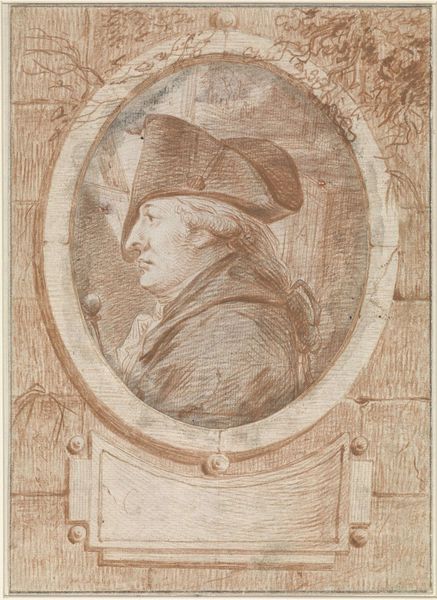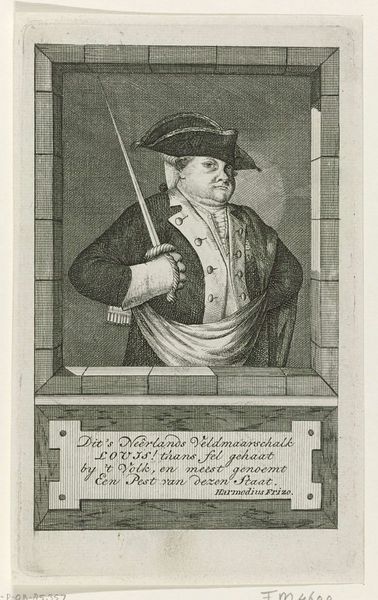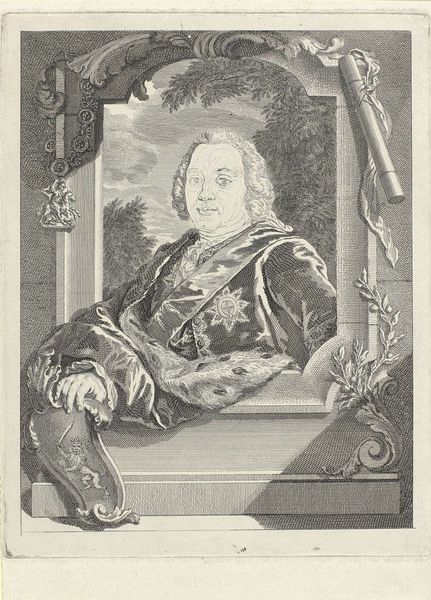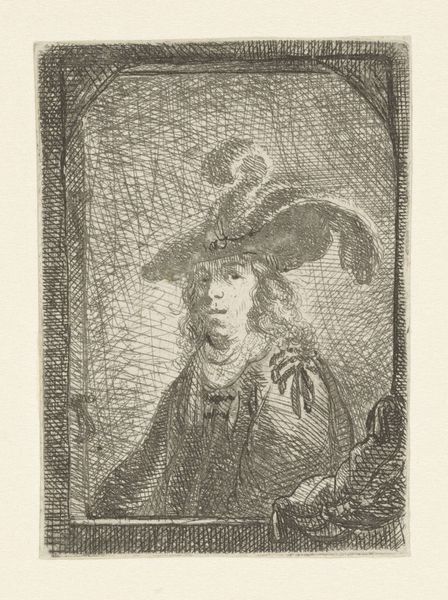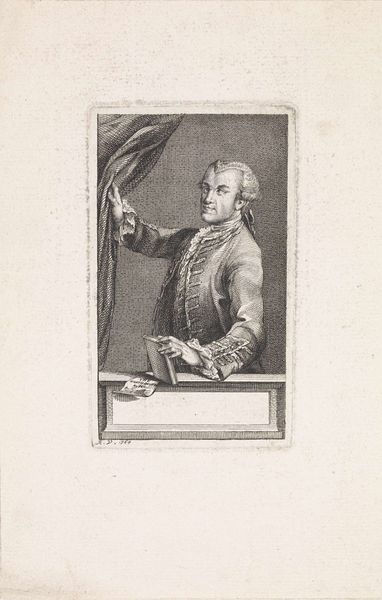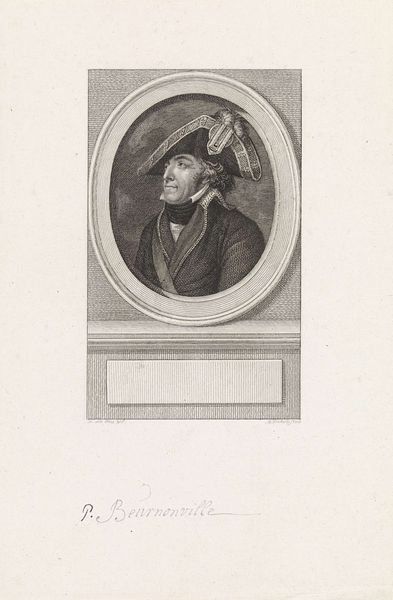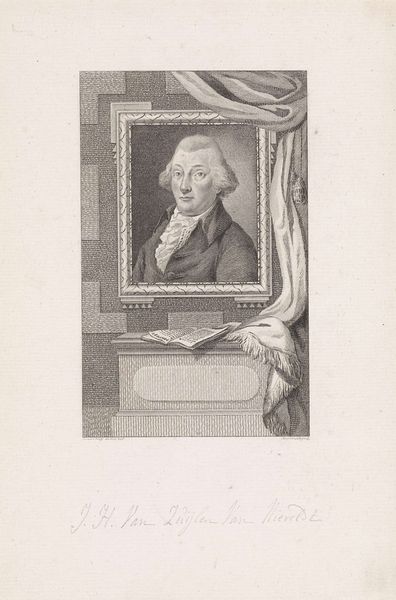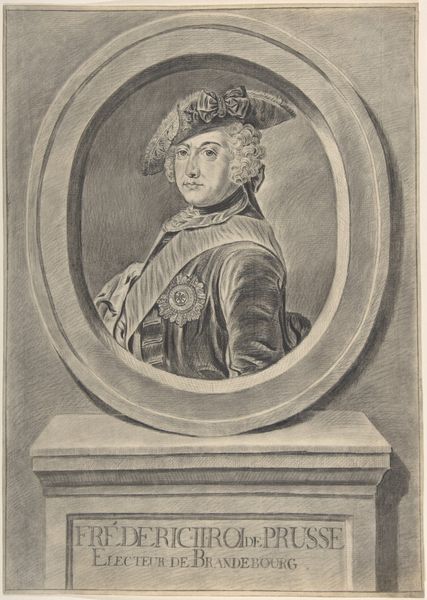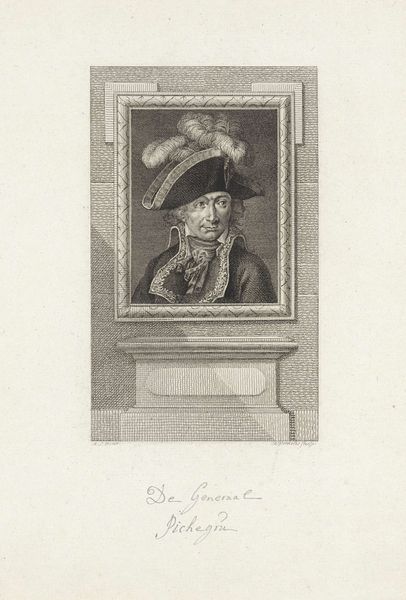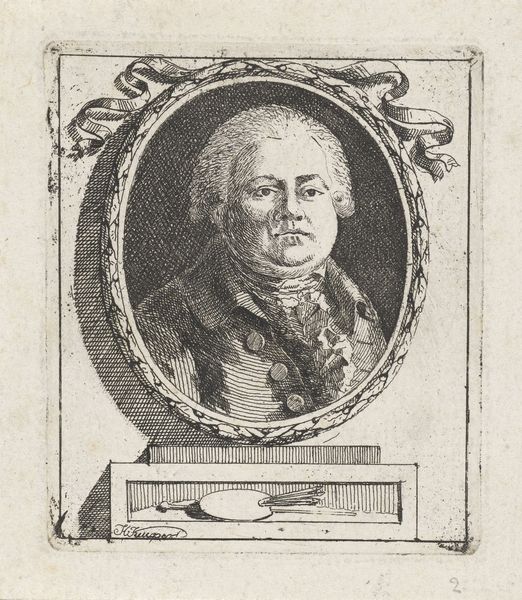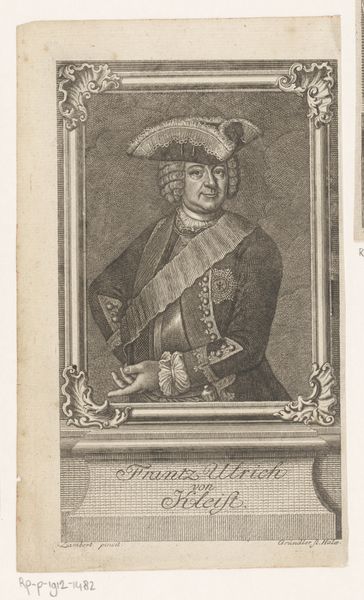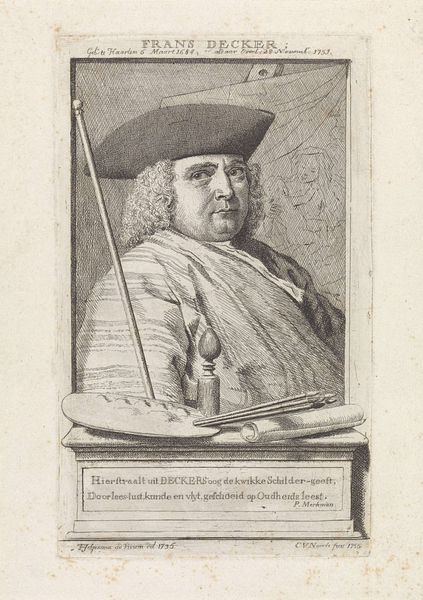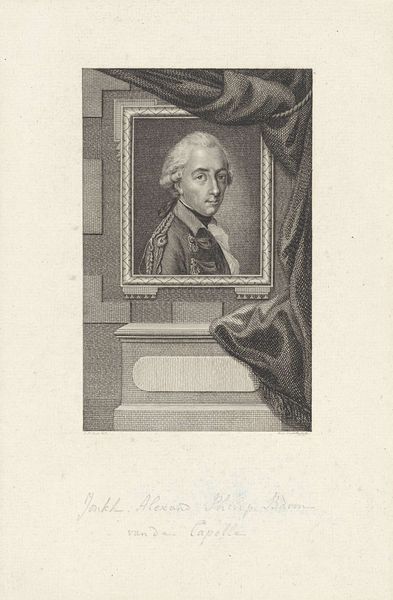
print, engraving
#
portrait
# print
#
classical-realism
#
engraving
Dimensions: height 264 mm, width 192 mm
Copyright: Rijks Museum: Open Domain
Hermanus Fock made this etching, Portret van Geerlig Grijpmoed, in the Netherlands, sometime around the late 18th or early 19th century. Look at the way Grijpmoed is framed within an oval, set against what looks like a stone wall with foliage creeping in at the top. This creates a sense of timelessness, typical of classical portraiture. Yet, the etching technique, with its delicate lines and attention to detail, roots it firmly in its own era. This was a time of social and political upheaval, the Batavian Republic had just been established, and the old order was crumbling. We can speculate that Fock’s work served a conservative function by presenting the sitter as an embodiment of traditional virtues. Further research into the sitter's family, and the institutions with which they were connected, would reveal the social context of the work. Historians often consult archives, letters, and other period documents, to fully understand the circumstances and motivations behind a work of art like this.
Comments
No comments
Be the first to comment and join the conversation on the ultimate creative platform.
